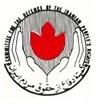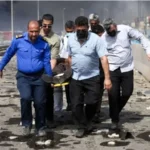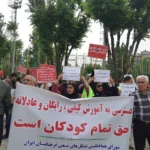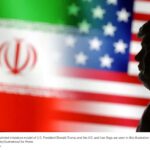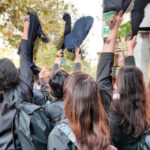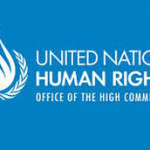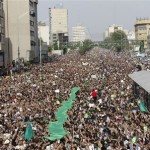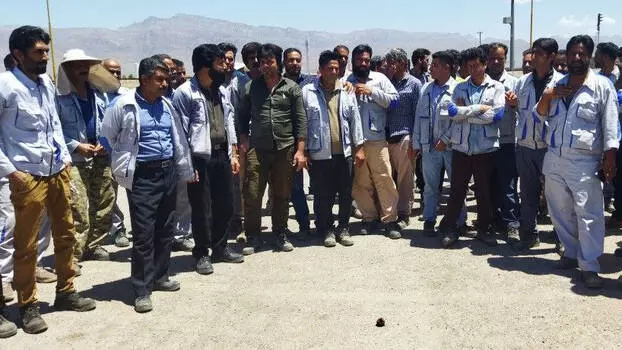
Growing labour unrest is keeping the revolution alive and threatening the ruling establishment
AUTHOR: Hamid Mohseni
If we are to understand and evaluate the situation faced by the striking workers in the Islamic Republic of Iran (IRI), it is essential that we first consider what rights and options they have, as well as the economic conditions in the country more broadly.
The mullahs and the Revolutionary Guards maintain an authoritarian regime in which all fundamental political rights and freedoms have effectively been abolished. This includes freedom of association and assembly, along with the right to strike, which labour law in the IRI does not protect. While there are a handful of official trade unions in the country,[1] there are no independent unions in Iran and by extension no strikes conducted by workers who are free to come together and organize of their own accord — such organizations are always presumed to be “threats to national security”. Thus, any mention in this text of independent trade unions refers to organizations that are in fact illegal, but are nonetheless tolerated due to their significance.
These unions face considerable opposition from the state, and their activists pack the cells of prisons throughout the country. Hundreds or even thousands of activists and sympathizers are arrested in the wake of every action and strike — and yet protests and actions continue to take place on an almost daily basis. In 2022 alone, the Human Rights Activists News Agency counted at least 1,289 protests initiated by workers and 344 strikes — the real figure may well be higher, considering that a number of other actions have been either poorly documented or in some cases not at all.
What is it that compels people to take to the streets time and again in the face of such difficult conditions? Put simply: a battle for survival.
Most people in Iran are profoundly impacted by the state of the country’s economy. Inflation this year is conservatively estimated to have hit 50 percent. In 2017, the average annual income of an Iranian family was 10,000 US dollars. This year, that national average has reduced by half. For comparison, that is equivalent to what the average US household earned per month.
According to government figures, one third of all Iranians currently live below the poverty line of 500 dollars per month, with the real figure estimated to total somewhere between 60 and 80 percent. A large number of workers across all sectors are owed wage arrears.
Poverty is not a marginal issue in Iranian society — it is the normal state of affairs. Hence, the main reason why workers in Iran take to the streets is because they need money to survive. At rallies and on their many Telegram channels, Iran’s workers share heart-wrenching accounts of how several families have to live together in one cramped flat just in order to be able to put a roof over their heads, or how basic foodstuffs have become luxury items that their children have not been able to eat for months or in some cases even years.Previous imageNext image
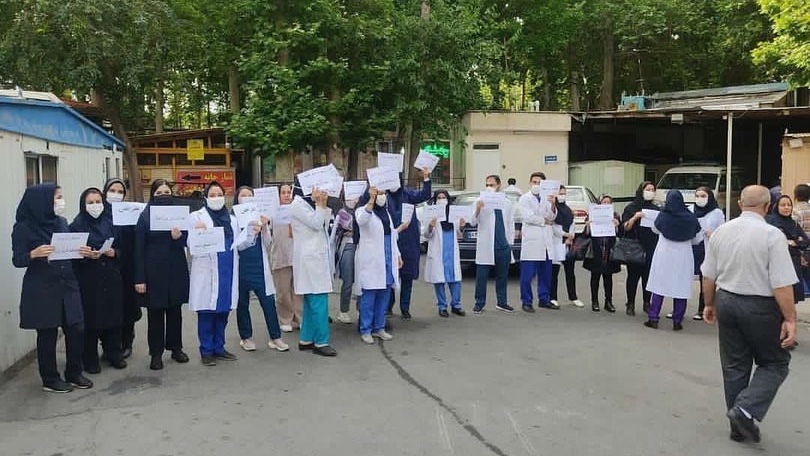
A protest meeting of rental car drivers in Urmia in Rezvan Garden over unpaid salaries and non-renewed contracts, 20 May 2023.Photo: iranworkers/twitter
A group of pensioners and people dependent on social benefits gather in Ahvaz, Khuzestan province to protest against poor living conditions, 30 April 2023.Photo: iranworkers/twitter
Strike at the Dralo copper mine project in Kerman, Iran over wage demands, 23 April 2023.Photo: iranworkers/twitter
Iran is not a poor country. On the contrary: it is home to the fourth-largest oil reserves and second-largest gas reserves in the world. Furthermore, these resources constitute the country’s most significant industry, and despite Western sanctions, Iranian oil routinely attracts wealthy buyers.
However, this money only serves the interests of those in power — in other words, the mullahs and the Revolutionary Guards and their affiliated political apparatuses. They have powerful conglomerates — involving corporations, financial institutions, and infrastructural elements — at their disposal in virtually all sectors: not just in the oil, gas, and petrochemicals industries, but also in telecommunications, construction, and logistics. Bonyâds — foundations not dissimilar to NGOs and masquerading as charitable organizations — account for approximately 20 percent of Iran’s gross domestic product, and are continuing to expand.
This elite structure made up of mullahs and Revolutionary Guards and characterized by cronyism and corruption is increasingly assuming power over the spheres of politics, economy, and the military, and is steadily widening the gap between rich and poor. While millions of Iranian workers will struggle to feed themselves in the coming month, the elite of the IRI live in the lap of luxury.
Industrial Disputes Fuel the Revolution
The last wave of uprisings to sweep Iran, which was triggered by the death of Jina Mahsa Amini on 16 September 2022, was the most violent the country has ever experienced. At the same time, it marked the final chapter of Iran’s revolutionary process — one that will inevitably bring about the end of the IRI, such is the rift that separates the elite from the country’s extremely young population.
Despite the attempts of those in power to propagate the notion that Iran has returned to a state of normality, the country is in fact still in a state of emergency — there is no sign of peace on the horizon, not even a graveyard peace. There are two key reasons for this: Firstly, brave Iranians continue to refuse to don the obligatory hijab in their daily lives. Images of women and girls without headscarves have been emblematic of the uprisings in the wake of Amini’s death (sparked by an ill-fitting hijab) from the very beginning, and the free-flowing locks of Iranian women continue to rock the patriarchal structure of the IRI, one of the cornerstones of Iranian society.
The second reason lies in strikes and industrial disputes, which have already figured prominently in the last six months of the Iranian revolution. Shortly after Amini’s death, Iranian Kurdistan launched a general strike in solidarity with the protest movement. For weeks and then months, they were joined by workers from a broad range of sectors, including the education, logistics, metalworking, agriculture, textiles, and food industries.
These strikes have played a pivotal role in how protests have been orchestrated during the most recent wave of uprisings. While it has primarily been young people who have defied the government by staging demonstrations and militant actions in the afternoons and evenings, workers and pensioners have kept the protest movement alive through everyday actions, thus finding a very practical way to express their solidarity with the younger generations.
At the moment, we are seeing a continuation — or even an intensification — of industrial disputes in the country into what could well be the largest wave of strikes the Islamic Republic has ever seen. For weeks, and in some cases even months, pensioners, teachers, steel and metal workers, truck drivers, medical personnel, and workers from other sectors have been on strike, regularly taking to the streets throughout the country.
The IRI should continue to be deeply worried: nothing less than its very existence is at stake.
The Iranian Teachers’ Trade Association, perhaps the country’s most well-organized independent union, frequently goes on strike. Their most recent action was to call a national strike for 9 May 2023. Through its strike actions, the union is attempting to draw attention to the appalling conditions in schools and other educational institutions and consistently expresses its solidarity with other striking workers throughout the country.
One sector in particular is currently causing more worry for those in power than any other: the oil, gas, and petrochemicals industry. There are a number of reasons for this. Firstly, this sector is the most crucial one in terms of sustaining Iran’s economy. A second and related point is the industry’s deep symbolic significance: it was the widely publicized oil workers’ strike of 1978 that dealt a critical blow to the already weakened Shah and helped propel the revolution to victory. Now, workers from this sector — from over 110 sites and companies in 14 of Iran’s 31 states, and particularly workers on fixed-term contracts — are once again going on strike and eroding the profits that are so vital to the country’s economy.
The wave of strikes is expanding beyond Iran’s borders, reaching sites in neighbouring Iraq. The Council for Organizing Oil Contract-Workers’ Protests called for protests back on 21 April. The council did not provide any specific details on the number of demonstrators involved, but the state-run media reported that as many as 4,000 strikers “would be replaced”. It is safe to assume that the actual number of striking workers is in fact higher.
The significance of the protest is also evidenced by the much friendlier tone taken by the ruling elite, who have tried to show sympathy and have even gone so far as to praise those on strike. None other than the IRI’s Supreme Leader of the Islamic Revolution, Ali Khamenei, recently said: “These protests are actually helping the government and the system and making them understand [the demands of workers].”
The leader followed this up by shedding a few crocodile tears — not at all uncharacteristic for one of his sermons, but remarkable from a head of state who has suspected foreign conspiracies behind almost all of the country’s other protest movements and had them brutally suppressed. In this case, as well: despite Khamenei’s rhetoric, striking workers are in fact being subjected to severe repression in keeping with the IRI’s zero-tolerance approach.
Breaking with the System and Weaponizing Solidarity
Khamenei’s tone hardly comes as a surprise, given how aware the mullahs and the Revolutionary Guards are of the significance of such strikes, especially coming from this sector: in 1979, they were revolutionaries and reaped the benefits of strike actions; now they find themselves on the other side of the barricade. Moreover, the strikers belong to a social milieu with which the IRI has always sought to curry favour — those they call “ordinary people”.
For a long time, the social base of the IRI was made up of members of the lower classes, workers, the poor, and above all the devout. The Revolutionary Guards recruit their members in large part from poorer neighbourhoods and the well-attended Islamic seminaries located in these areas, luring potential recruits with the offer of privileges like access to the education, housing, and healthcare systems. Conservative presidential candidates, such as former president Ahmadinejad (2005–2013), would regularly visit poverty-stricken neighbourhoods during their election campaigns, attempting to display a “common touch” by handing out money and alms.
The election results confirmed the efficacy of this approach: the majority of people from this constituency voted conservative. Hence, the pragmatists in the “reformist” camp sought out a different constituency, which it found in the early 2000s in a young, middle-class generation to whom it promised political freedoms and a little more “room to breathe”.
This division, which sees the poor and pious voting conservative and the educated middle classes voting reformist, has long defined Iran’s domestic political landscape. Even in the early 2000s, there were extensive and effective industrial disputes and strikes, such as the 2004 bus drivers’ strike in Tehran, which brought the city to a partial standstill. These kinds of struggles have continually shattered the fairy-tale narrative of a supposed unity between the working class and the state. And yet, the various segments of Iran’s population have in many cases remained divided with respect to their protests and demands.
The question of class in Iran is also invariably one of (ascribed) ethnic or religious identity.
The working classes and the poor would only break with the IRI system and emancipate themselves from it later, during the social protests of 2017–2018 and 2019. Ultimately, it was the slightest of triggers, such as rising food and petrol prices, that propelled these groups — which until that point had not had much of an affiliation with protest movements — to take to the streets en masse throughout the country. The IRI was forced to engage every effort to stem the tide of revolt.
To this day, one slogan remains symbolic of the revolutionary process that was set in motion in Iran during that period. Of all people, it was the workers, the poor and destitute — defenders of the IRI and its core tenets — who chanted, “Conservatives, reformers, the jig is up!” and sent out a message: there can be no peace within this system. This radical motif has been a feature of all subsequent protests in Iran, culminating in those staged in the wake of Jina Mahsa Amini’s death.
As a consequence, the demands of Iran’s oil workers are in fact more varied than they may seem at first glance. The striking workers are demanding a 79-percent wage increase, ten work-free days every month, and improved levels of occupational safety. The question of safety is crucial: it is not only in the oil industry that workers are forced to perform high-risk labour under dangerous conditions, with many people killed or seriously injured in the process. The most profoundly affected are project workers and workers on fixed-term contracts, who have nothing in the way of legal protection.
On top of that, however, the workers on strike are also formulating political demands, which include an end to discrimination. On this point, a statement published by the Council for Organizing Oil Contract-Workers’ Protests reads:
It can be seen in some places that our protest rallies have been dispersed on the pretext that workers belong to a certain ethnicity. This is while all of us workers from every part of the country have common pains and enemies. Every day, all of us are protesting against poverty, price rises, and the deterioration of our working and living conditions.
This statement addresses an important, but delicate issue in Iran: the religious and racial discrimination directed against minorities at all levels. Ever since it was founded, the IRI has exploited ethnic and religious divisions as a means of pitting people against each other. In the process, the country’s minorities suffer what is clearly degrading treatment, they are oppressed, and their languages are banned and targeted for vilification. When it comes to work, they are forced to make do with precarious employment contracts.
The question of class in Iran is also invariably one of (ascribed) ethnic or religious identity. Striking oil workers address this fact when they call for solidarity and an end to discrimination. In so doing, they are returning to one of the most important sources of the revolutionary process and the defining feature of the wave of uprisings that followed Amini’s death: solidarity. It bridges ethnic, religious, gender, class, and generational divides like never before and in the process undermines the IRI, which always tries to sow division.
The IRI should continue to be deeply worried: nothing less than its very existence is at stake.
[1]One organization that is worth mentioning and in a sense illustrative of the character of the IRI is Workers’ House, a powerful self-organized council structure during the revolution in 1978–79. After the Islamists came to power, the organization faced fierce opposition, before ultimately being taken over. It is now a state-run trade union and one of a number of pseudo-democratic institutions that the IRI uses to maintain a republican facade.

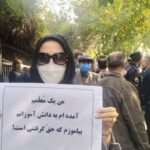
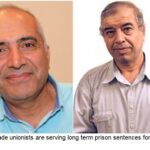
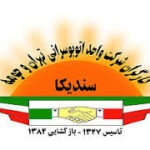

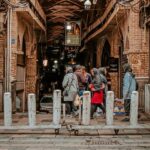
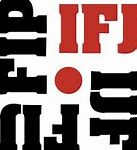


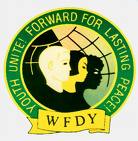
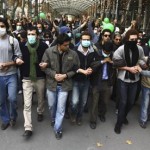
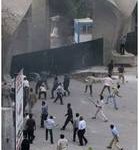
 Posted in
Posted in 